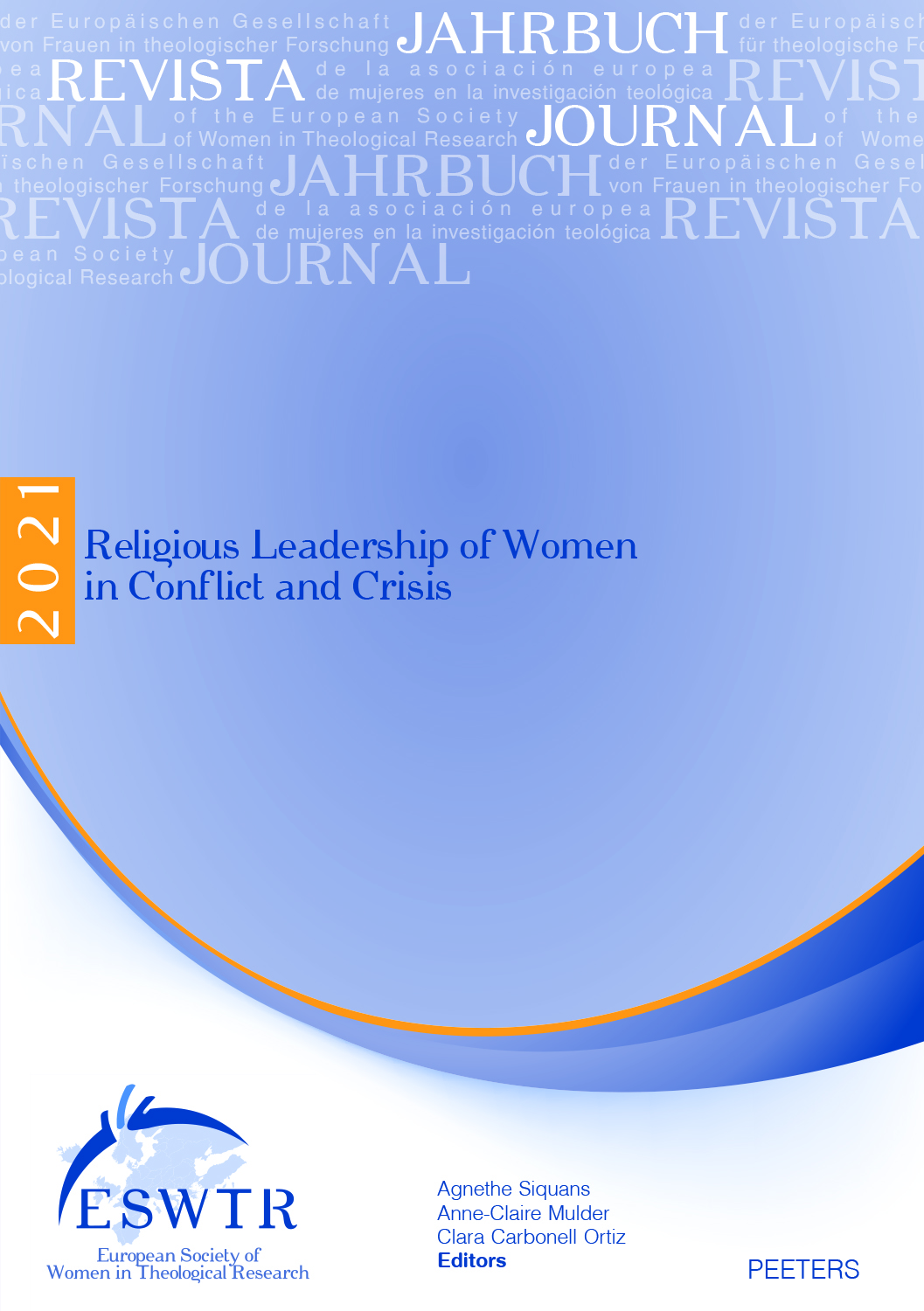 previous article in this issue previous article in this issue | next article in this issue  |

Preview first page |
Document Details : Title: Trinh Minh-ha and In-between Religious Language Subtitle: Painted in Gray and Red Colours Author(s): GUĐMARSDÓTTIR, Sigríður Journal: Journal of the European Society of Women in Theological Research Volume: 21 Date: 2013 Pages: 53-66 DOI: 10.2143/ESWTR.21.0.3017275 Abstract : Trinh T. Min-ha (1952-) is a Vietnamese feminist and poststructuralist filmmaker and thinker. The article uses Trinh’s theories of symbolic language and in-between spaces to reflect on gender in religious language in the West. Trinh writes of the myth of sun and moon and argues for a possible gap that opens up to thinking about women in relation to this dark luminary of fragrance and mystical glow, conveyed to us through storytelling, festivals and traditions. In a move parallel to Trinh’s, I am pondering the traditional Western imagery of light and the gender of light, where the female moon is so often seen as a helpmate to the masculine sun. The traces of this relationship can for example be seen in the depictions of Christ as sun and Mary as moon, as well as in Nordic mythologies. I am painting these images in Trinh’s colours, in gray and red, in-betweenness and plurality of meaning, in which old and new religious images are formed and reformed. Trinh T. Min-ha (geb. 1952) ist eine vietnamesische Feministin und poststrukturalistische Filmemacherin und Denkerin. Dieser Artikel verwendet Trinhs Theorien der symbolischen Sprache und des Dazwischen, um über Geschlecht in der religiösen Sprache im Westen zu reflektieren. Trinh schreibt über den Mythos der Sonne und des Mondes und argumentiert, dass es eine mögliche Öffnung gebe, die das Nachdenken über Frauen in Bezug auf diesen dunklen Himmelskörper des Dufts und mystischen Glühens ermöglicht, vermittelt durch Geschichten, Feste und Traditionen. In einer Parallelbewegung zu Trinh denke ich über westliche Bilder von Licht und dem Geschlecht von Licht nach, in denen der weibliche Mond so oft als Helferin der männlichen Sonne gesehen wird. Die Spuren dieses Verhältnisses finden sich zum Beispiel in Darstellungen von Christus als Sonne und Maria als Mond oder in nordischen Mythologien. Ich male diese Bilder in Trinhs Farben – in Grau und Rot, Dazwischen-Sein und Bedeutungsvielfalt, in denen alte und neue religiöse Bilder geformt und neu geformt werden. Trinh T. Min-ha (1952-) es una feminista, pensadora y cineasta vietnamita postestructuralista. El artículo utiliza las teorías del lenguaje simbólico de Trinh y sus espacios intermedios para reflejar el género en el lenguaje religioso en Occidente. Trinh escribe sobre el mito del sol y la luna, y argumenta a favor de una posible brecha que se abre al pensar en las mujeres en relación con este astro oscuro de la fragancia y el resplandor místico, transmitida a nosotros a través de cuentacuentos, fiestas y tradiciones. En un movimiento paralelo al de Trinh, estoy barajando la imaginería occidental tradicional de la luz y el sexo de la luz, donde la 'luna femenina' es a menudo vista como una ayuda idónea para el 'sol masculino'. Las huellas de esta relación se pueden ver, por ejemplo, en las representaciones de Cristo como Sol y María como la luna, así como en las mitologías nórdicas. Estoy dibujando estas imágenes con los colores de Trinh, en gris y rojo, en la intermediación y la pluralidad de significados, en la que se forman y reforman viejas y nuevas imágenes religiosas. |
 |


